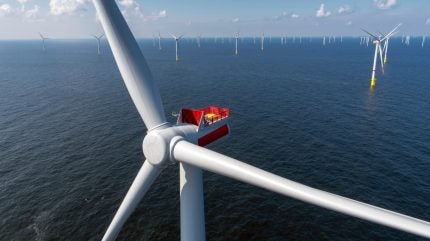
The US DOI has proposed new offshore wind lease areas off the coast of Oregon and in the Gulf of Maine that could support more than 18GW of energy generation.
The lease areas are expected to generate enough clean energy for six million homes.
The Gulf of Maine Wind Energy Area proposal encompasses eight lease areas off the coasts of Maine, Massachusetts and New Hampshire.
Covering one million acres, they will generate 15GW of wind energy.
The Bureau of Ocean Energy Management (BOEM) is considering multiple-factor bidding for the simultaneous auctions of these lease areas.
The BOEM is seeking public input on the proposed lease areas. Feedback is requested on their size, orientation and location, and on which areas should be prioritised or excluded from the upcoming lease sale.

US Tariffs are shifting - will you react or anticipate?
Don’t let policy changes catch you off guard. Stay proactive with real-time data and expert analysis.
By GlobalDataIn Oregon, the proposed lease sale includes two areas totalling 194,995 acres in the Coos Bay Wind Energy Area and the Brookings Wind Energy Area.
Department of Interior Secretary Deb Haaland stated: “Since the start of the Biden-Harris administration, the Department of the Interior has approved the nation’s first eight commercial-scale offshore wind energy projects. Today’s announcement represents another stride in our commitment to building a greener energy future while creating jobs and supporting families.
“We are taking decisive action to catalyse America’s offshore wind industry and leverage American innovation to provide reliable, affordable power to homes and businesses, all while addressing the climate crisis.”
The identification of these lease areas is the result of a multi-year planning process involving extensive engagement with stakeholders.
The planning process has been enhanced through a partnership with the National Oceanic and Atmospheric Administration’s National Centers for Coastal Ocean Science.
The collaboration has ensured the integration of the best available ocean resource information into the decision-making process for wind energy areas.
The BOEM aims to avoid offshore fishing grounds and identify vessel transit routes, while still providing sufficient space to meet regional offshore wind energy goals.
BOEM director Elizabeth Klein stated: “As we move forward with offshore wind energy in Oregon and the Gulf of Maine, the Bureau of Ocean Energy Management remains dedicated to close collaboration with our government partners and key stakeholders.
“We are excited to unveil these proposed sales and emphasise our commitment to exploring the potential for offshore wind development from coast to coast.”
Alongside the proposed lease sale, the BOEM has released a draft environmental review of the potential impacts associated with offshore wind energy leasing activities. This document is open for public review and comment.
In March 2024, the DOI approved Avangrid’s 2.6GW New England Wind offshore wind farm.
The project, situated 20 nautical miles (nm) south of Martha’s Vineyard and 24nm south-west of Nantucket, Massachusetts, will be the eighth commercial-scale offshore wind energy project in the US.



